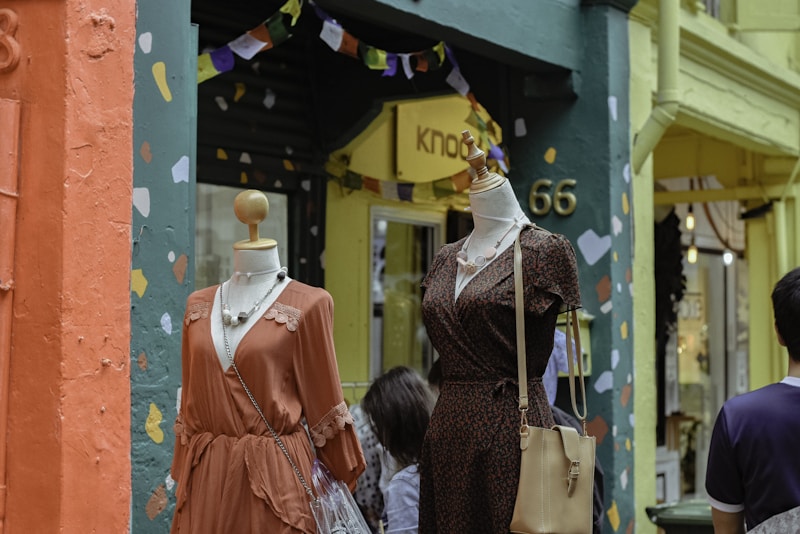Deciphering Dress Codes: A Comprehensive Guide
Understanding Dress Codes: What They Really Mean
In today’s world, understanding the nuances of dress codes is essential. Whether you're attending a wedding, a corporate event, or a casual gathering, knowing what to wear can often be confusing. This guide will help you in deciphering dress codes, making sure you never feel out of place.
The Basics of Dress Codes
Dress codes are often listed on invitations or specified by event organizers. They can broadly be categorized into several types. Let’s break them down:
| Dress Code | Description |
| Casual | Relaxed, comfortable attire. Perfect for informal gatherings. |
| Business Casual | A step up from casual; includes slacks, blouses, and closed-toed shoes. |
| Business Formal | Professional attire; think suits for men and tailored dresses for women. |
| Black Tie | The most formal; men wear tuxedos and women wear formal gowns. |
| White Tie | The pinnacle of formal attire; men wear white bow ties and women wear full evening gowns. |
Casual Dress Codes
Casual dress codes are common for informal gatherings, such as a trip to the beach, a barbecue, or a casual dinner with friends. You can opt for comfortable jeans, t-shirts, and sneakers. The key is to be relaxed yet presentable.
Tips for Casual Attire
Mix comfort with style by choosing stylish outfits that are easy to wear. Consider adding accessories like hats or statement shoes to elevate your look while keeping it casual. Remember that even in a casual setting, your outfit reflects your personality, so choose pieces that make you feel confident.
Business Casual Dress Codes
Business casual is often expected in professional environments like offices and conferences. This dress code balances professionalism with comfort, allowing for a range of stylish options.
Key Elements of Business Casual
For men, a pair of chinos or slacks paired with a collared shirt or pullover is usually appropriate. On the other hand, women might choose a knee-length dress, a blouse with trousers, or a skirt with a tailored jacket. Footwear matters too; opt for loafers, closed-toed pumps, or dressy sandals.
Understanding Business Formal Dress Codes
When you see "business formal," it typically means you should dress in a manner suitable for an important meeting or corporate function. This style is characterized by slick, professional outfits that fit well. Men may wear a suit and tie, while women should look for tailored dresses or a professional suit.
Key Takeaways for Business Formal
Investing in high-quality fabrics and tailored fits will make a world of difference. Remember to coordinate colors and patterns thoughtfully to achieve a polished look.
The Black Tie Standard
When invited to a black tie event, such as a wedding reception or an upscale gala, you'll want to sport a tuxedo. For women, it typically means an elegant evening gown or dressy cocktail attire.
Accessories and Etiquette
Black tie events suggest sophistication, so consider adding statement jewelry or a stylish clutch to enhance your outfit. It's also essential to pay attention to grooming, as these events expect attendees to look their best.
Mastering White Tie Events
The white tie dress code is rare and reserved for the most formal occasions, like state dinners or ultra-formal gala events. Men should wear a tailcoat, white bow tie, and formal white shirt, while women should don full-length evening gowns that may include gloves.
Key Considerations for White Tie
When dressing for a white tie affair, choose luxurious fabrics and delicate details. Accessories, including elegant clutches and understated jewelry, can complete the ensemble while still keeping the focus on the gown.

Frequently Asked Questions about Dress Codes
What if the dress code isn’t specified?
If no dress code is provided, it’s usually best to lean toward business casual or semi-formal. When in doubt, you can always reach out to the host for clarification.
What if I'm unsure about the dress code?
Do not hesitate to ask for guidance from friends or the event organizers. It’s always better to be slightly overdressed than underdressed for an occasion.
Can I mix dress code types?
While it can be tempting to merge styles, it’s important to maintain a level of respect for the event's formality. When attending a formal event, it's wise to adhere strictly to the suggested attire.
Conclusion and Final Thoughts
Deciphering dress codes might seem intimidating, but with a bit of insight and preparation, you’ll always be able to dress appropriately for any occasion. Understanding the difference between casual, business casual, business formal, black tie, and white tie is crucial for making a lasting impression. Remember to consider the event's venue and theme, which can also guide your outfit choices.
In conclusion, respecting the dress code is not just about fitting in, but about honoring the social conventions and efforts of the event hosts. Always pay attention to details, invest in key pieces for your wardrobe, and don’t hesitate to ask questions when in doubt. You'll find that dressing appropriately becomes second nature, allowing you to focus on enjoying the event.